Want to learn how to stock your pantry so it’s really easy for you to make balanced meals with what you have on hand?
Setting your environment up for success is key to maintaining balanced eating habits for the long-term, even when life is busy, stressful, or you’re out of your normal routine.
Our Mindful Nutrition Method students know that maintaining the balance they’d like to have is so much easier when they make it easier to follow through, and having balanced options in your fridge is one simple way to make that possible!
students know that maintaining the balance they’d like to have is so much easier when they make it easier to follow through, and having balanced options in your fridge is one simple way to make that possible!
Additionally, all our Mindful Nutrition Method students get a full video tour of how to stock your pantry, fridge, freezer, and kitchen along with some other amazing bonus video lessons. Are you interested in these bonuses? Watch the free masterclass to learn more!
It’s an amazing feeling to open up a pantry full of your favorite nourishing whole foods just waiting to be used in your next meal or snack, and it’s great to be stocked at all times just in case inspiration strikes to make homemade nut butter, trail mix, truffles, soup or a batch of cookies.
But, you may be wondering, how should I stock my pantry to set myself up for success with balanced eating? Keep reading and I’ll guide you through a few simple tips.
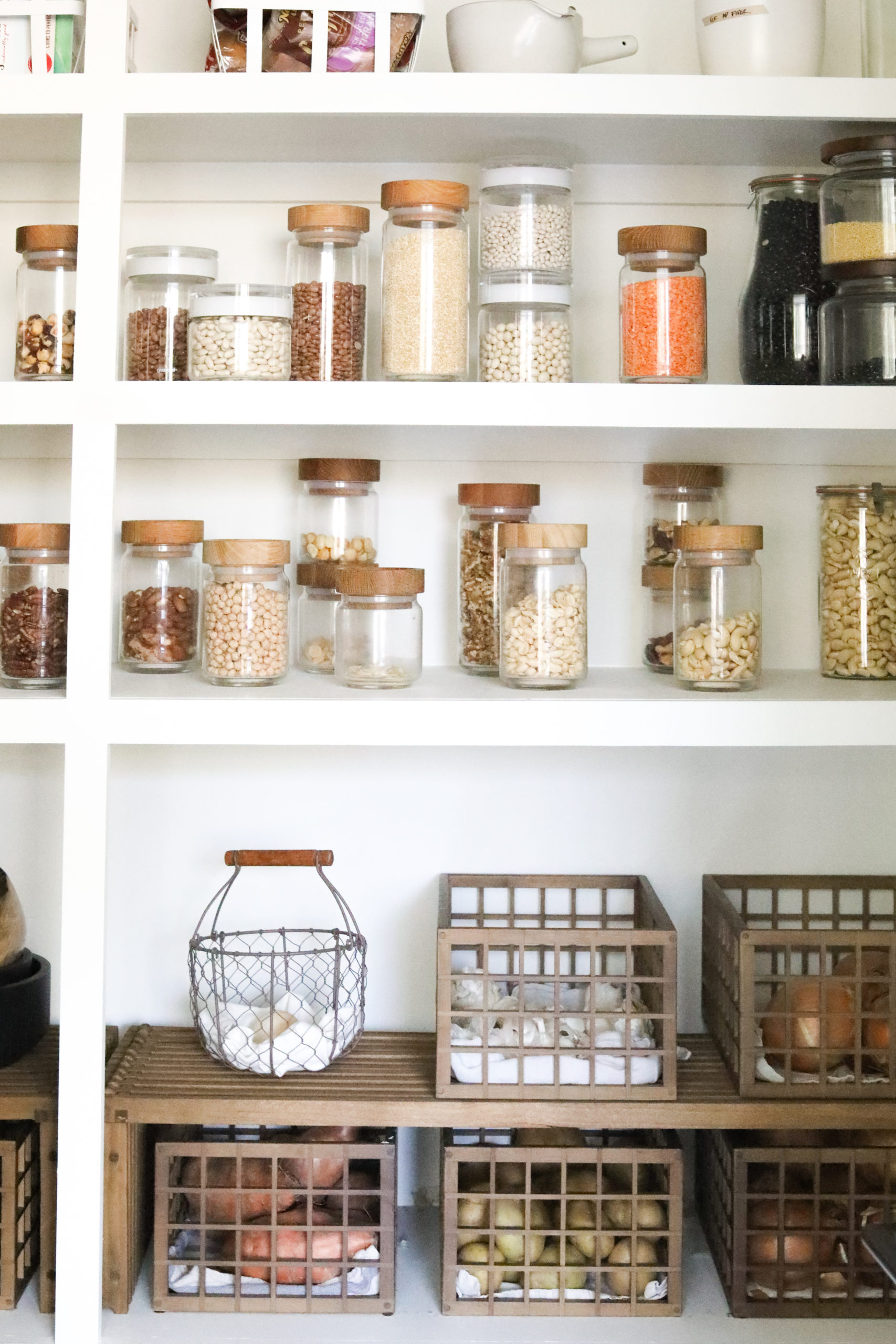
How To Stock Your Pantry For Balanced Eating
The key to stocking your pantry for balanced meals is to make sure you have ingredients for each of the elements in my Foundational Five, which is my system for creating balanced meals with ease without tracking, counting calories, and without stress.
You’ll need protein, fat, non-starchy carbohydrates, starchy and sugary carbohydrates, and Flavor Factors.
Beans and Legumes
Element of the Foundational Five: Starchy Carbohydrates and Protein
If you know me, you know beans are a huge staple in our household — we eat them multiple times a day!
Dry beans and legumes open up an entire world of plant protein, fiber (especially soluble fiber), and versatility in texture in everyone’s diet, regardless of if you consume only plant-based proteins or animal proteins.
Since beans and legumes are incredibly affordable, even if you do consume animal proteins you can incorporate them into animal protein dishes to help reduce the amount of meat intake while making your meal last longer. For example, when making traditional taco meat, add beans and use half or less of the actual meat to increase your nutrition and yield.
If you use canned, I recommend finding organic canned beans and rinsing them very well before using them.
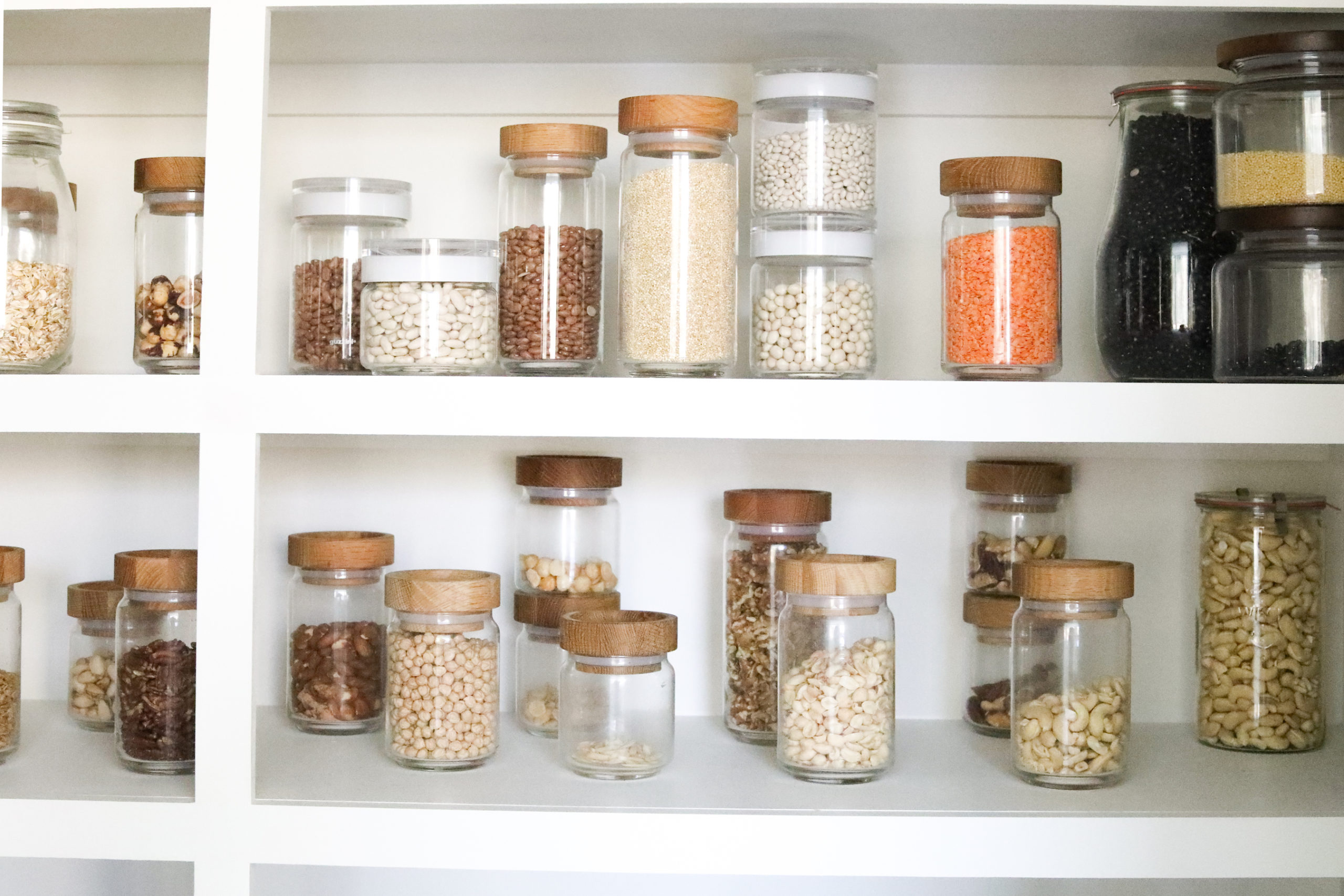
Stock Your Pantry: Beans and Legumes
- Black beans
- White beans
- Pinto Beans
- Chickpeas
- Lentils
- Mung Beans
- Kidney Beans
- Chickpea pasta and rice (look for the Banza brand)
Grains
Element of the Foundational Five: Starchy Carbohydrates
Grains are rich in starchy carbohydrates, fiber, some protein, and some fatty acids. They also offer a host of vitamins and minerals. Besides fruit, grains and legumes are some of the best carbohydrate sources to have on hand for eating balanced.
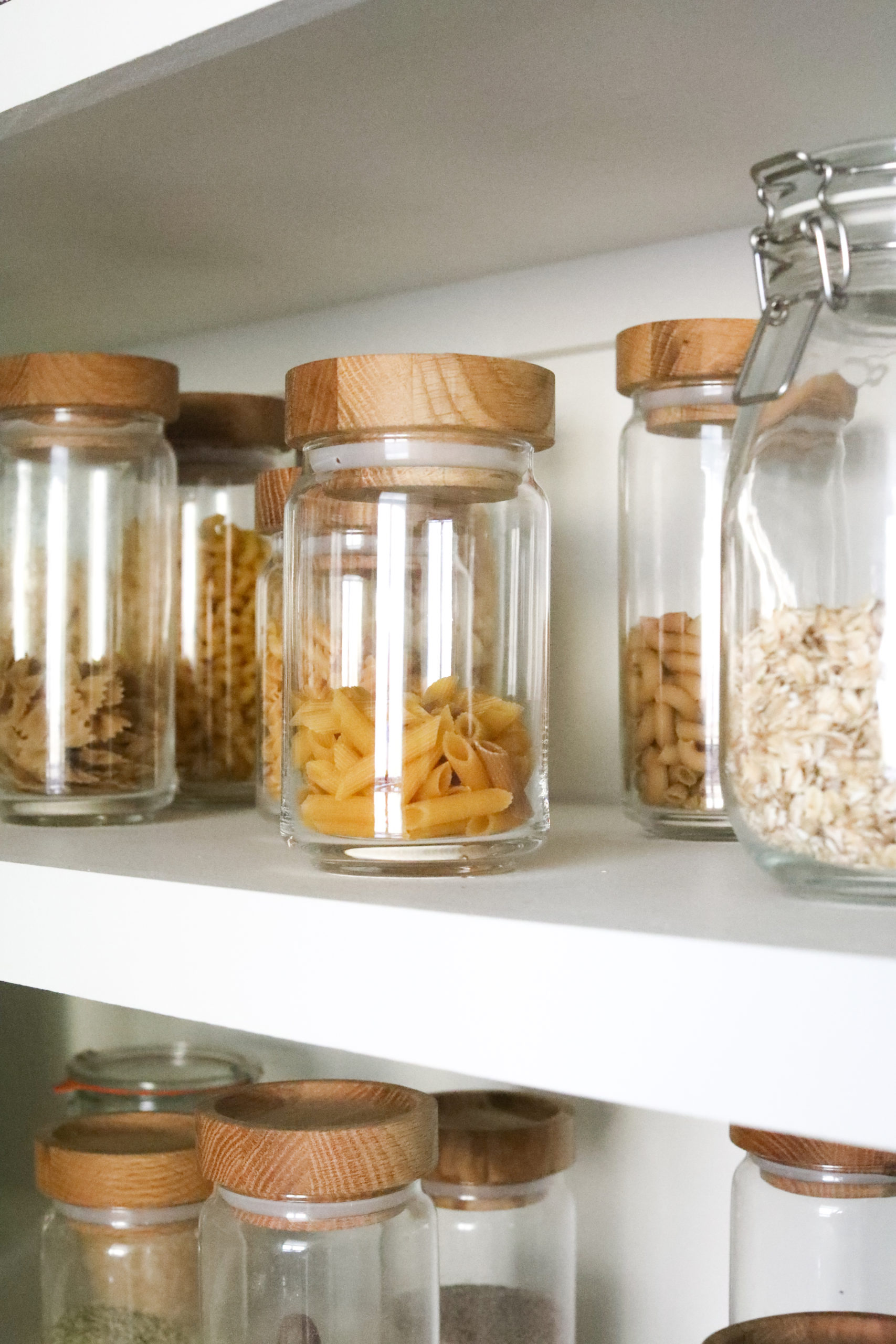
Stock Your Pantry: Grains
- Quinoa
- Amaranth
- Rice varieties (wild, brown, forbidden)
- Millet
- Buckwheat
- Oats
- Soba Noodles
- Gluten-free pasta
Nuts & Seeds
Element of the Foundational Five: Fat and Protein
Nuts and seeds are a staple in my pantry because of their wide variety of use, flavor, texture, and nutrient density overall. Whenever I need a little extra creaminess or density in any recipe or want to boost the protein and minerals, I’ll open up my pantry full of glass jars filled to the brim with nuts and seeds and be reminded of all the possibilities there are in this healthy fat family.
I recommend purchasing your nuts and seeds in their most plain and natural state – raw, unsalted, and organic when possible. This not only ensures you’re getting the most nutrient density, but also the widest range (culinarily speaking) since you can adjust the flavor of each nut and seed by lightly toasting or adding salt to enhance the nutty flavors.
Most nuts and seeds contain similar ranges of heart-healthy fats, antioxidants, minerals, and plant-based proteins. With a special note for walnuts, chia seeds, and hemp seeds that contain higher amounts of omega-3 fatty acids.

Stock Your Pantry: Nuts and Seeds
- Almonds
- Cashews
- Brazil Nuts
- Walnuts
- Pecans
- Pistachios
- Pine Nuts
- Chia Seeds
- Hemp Seeds
- Flax Seeds
- Peanuts
- Pumpkin Seeds
- Sunflower Seeds
- Sesame Seeds
Oils
Element of the Foundational Five: Fat
Don’t fear the fat! Adding healthy fats to any dish aids in our body’s ability to absorb fat-soluble vitamins like vitamins D, A, E, and K.
These also provide a layer of flavor and a vehicle for fat-soluble vitamins that no other macronutrient can compete with. Healthy fats like olive oil and coconut oil have been shown to provide cardiovascular benefits, aid in digestion, help with hormone production, fight inflammation, aid in healthy hair, nail, and skin integrity, and play a role in collagen production.
Here are some tips for you, try your best to look for and purchase oils that are cold-pressed and extra-virgin. Then be sure to store them properly in a cool and dark place when you get them home.
Stock Your Pantry: Oils
- Avocado Oil
- Coconut Oil
- Flaxseed Oil
- Olive Oil
- Sesame Oil
Vinegar
Element of the Foundational Five: Flavor Factor
Vinegar is a must-have in any kitchen! It provides the tang and acidity most recipes require to balance flavors as well as provide a host of nutritional benefits, especially those that are naturally fermented such as raw apple cider vinegar.
Vinegar is typically used towards the end of the recipe for adding a final splash of acid and tang to brighten the dish or enhance flavors. Raw apple cider vinegar, for example, has been shown to support maintaining healthy cholesterol levels, healthy weight, and maintain healthy blood sugar levels.
When shopping for vinegar, opt for unpasteurized and naturally fermented as much as possible, the next best option is an organic unfiltered vinegar. The only ingredients should solely be the vinegar, so no added colorings or thickeners.
Stock Your Pantry: Vinegar
- Bragg Raw Apple Cider Vinegar
- Red Wine Vinegar
- Sherry Vinegar
- Balsamic Vinegar
- Coconut Vinegar
Dried Herbs and Spices
Element of the Foundational Five: Flavor Factor
Dried herbs and spices are the easiest to store, making them accessible and simple ways to boost flavor and nutrition, sans artificial flavorings and added sodium.
Not only do herbs and spices add tremendous flavor to every dish, but they’re also packed with nutrition, especially my favorite of them all – turmeric and cinnamon.

Stock Your Pantry: Herbs and Spices
- Basil
- Chive
- Cilantro
- Dill
- Mint
- Parsley
- Oregano
- Rosemary
- Thyme
- Sage
- Cinnamon
- Turmeric
- Bragg Nutritional Yeast
Convenient Yet Nourishing Foods
Element of the Foundational Five: Varies
Whether it’s a premade snack or baking mix, having your pantry stocked with a few convenient items is key for maintaining balanced eating habits. We all know there will be days where you don’t have the time or energy to make the balanced meal you’d like or when you’re really wanting something to snack on that’s balanced.
In those moments, it’s key to having options on hand that make it easy for you to make balanced choices.
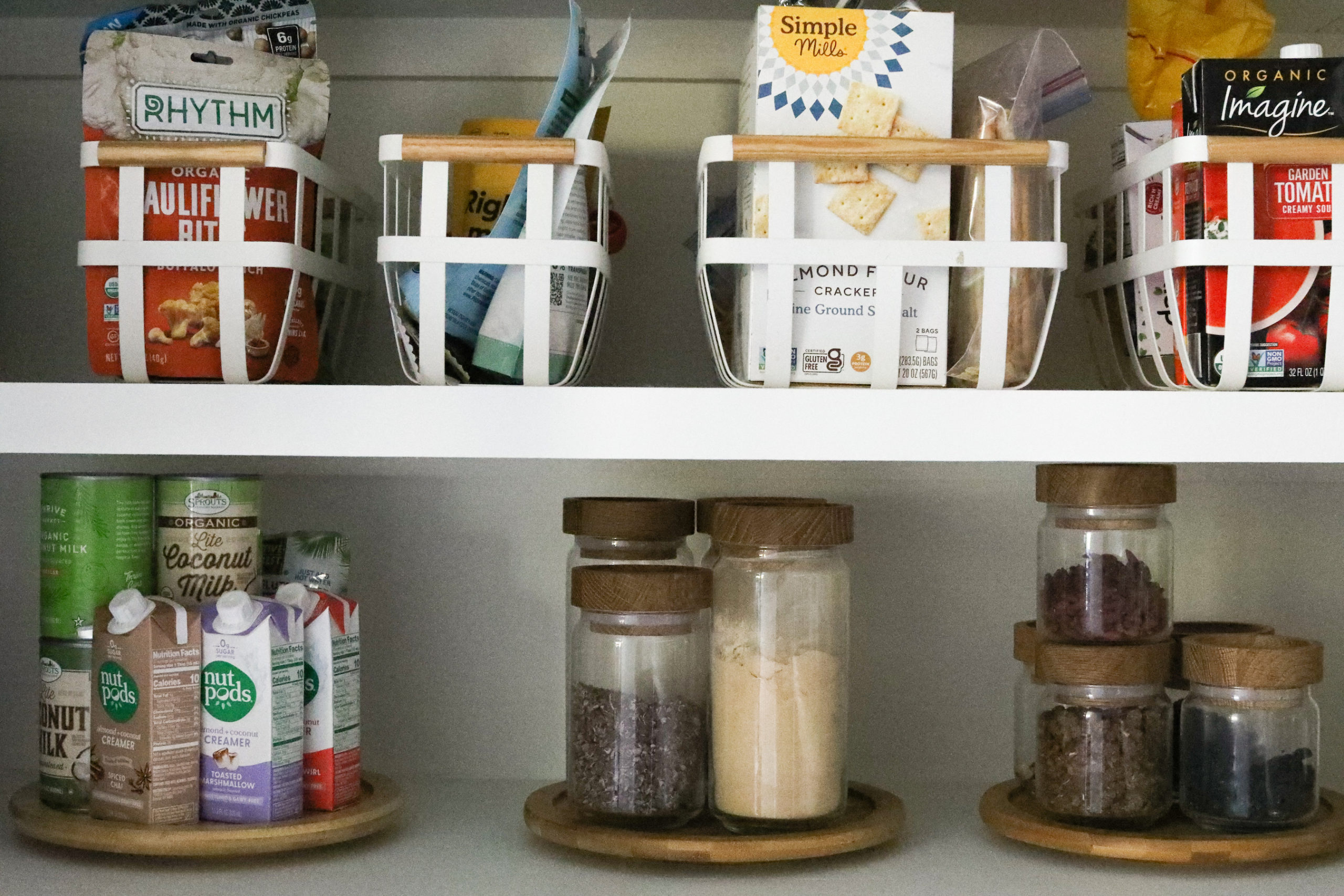
Stock Your Pantry: Convenient Yet Nourishing Foods
- Simple Mills
- Siete Foods
- Hu Kitchen
- Forager
- Bob’s Red Mill
- Late July
- Mary’s Gone Crackers
Our Favorite Pantry Products Used
- Weck Jars
- Glasslock meal prep containers
- Baking soda packs for reducing odors
- Marie Kondo wood crates
- Container Store glass jars with wood tops
- Container Store lazy Suzan
- Linen (or washable towels) to line the crates with
- Washi tape to label jars with
Additional Articles You May Enjoy
- Food safety 101 with food storage
- 5 Hacks To Stock and Organize Your Kitchen
- 5 Tips To Organize Your Pantry Like A Pro
- 20 Pantry Meals To Try
- Creating A Healthy Organized Pantry
Stocking Your Pantry For Balanced Eating
Now that you know what should be stocked in your pantry, your next step is to identify what gaps you have. Do you have at least one option per category? Which ingredients don’t you have but do you realize you would absolutely love to eat more often?
Take inventory and then put it on your grocery list this week.
Remember, it may seem simple but stocking your pantry is one way you can set yourself up for success and make it so much easier to build the habit of balanced eating.
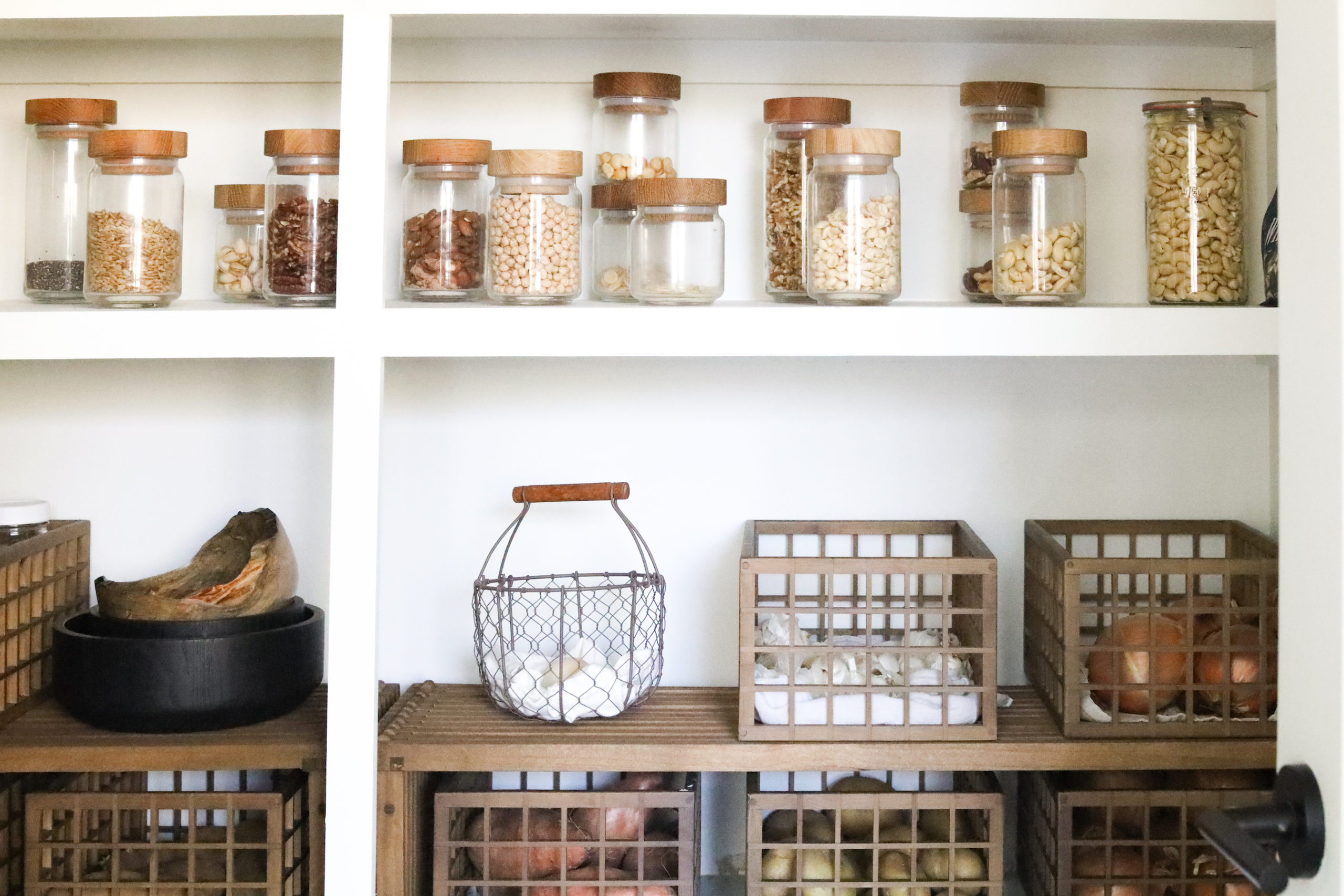
Do You Want To Start Experiencing More Balance With Your Eating Habits Today?
Discover the simple yet effective tools you can start using at your next meal to experience more balance with your food choices today, plus the steps to maintain balanced eating habits for life.
Be sure to download our free balanced eating guide that brings you through the Foundational Five so you understand not only what components you need, but also why they’re important for your health and why this way of eating is helpful for creating balanced eating habits.
Download The Free Guide Now
The post How To Stock Your Pantry For Balanced Eating appeared first on Nutrition Stripped®.
McKel (Hill) Kooienga
Comments
Post a Comment